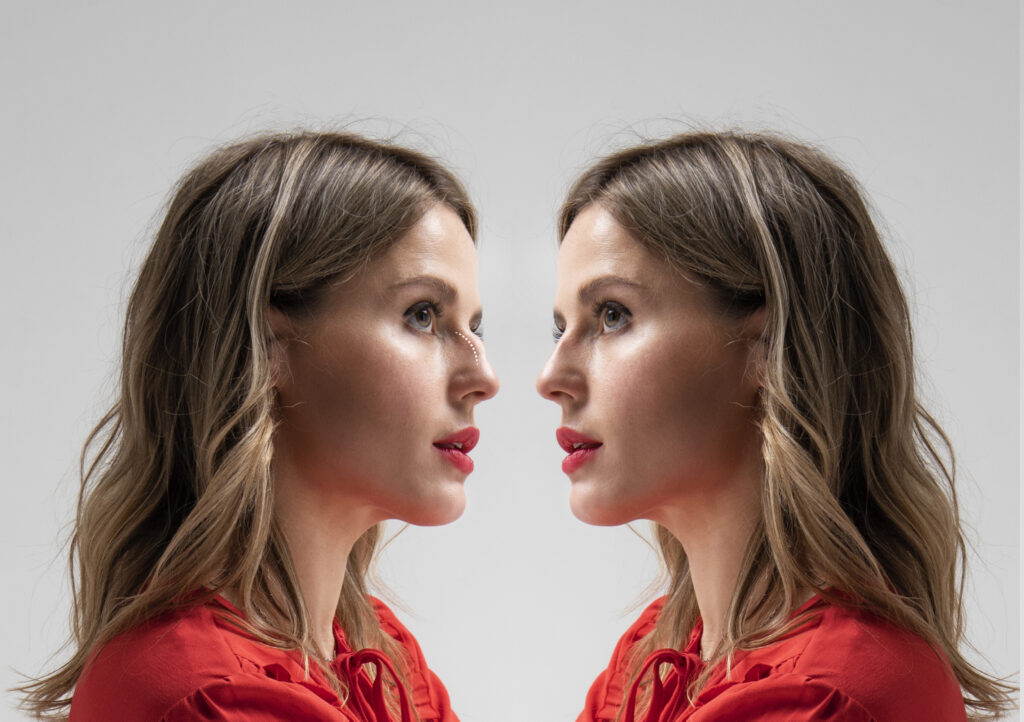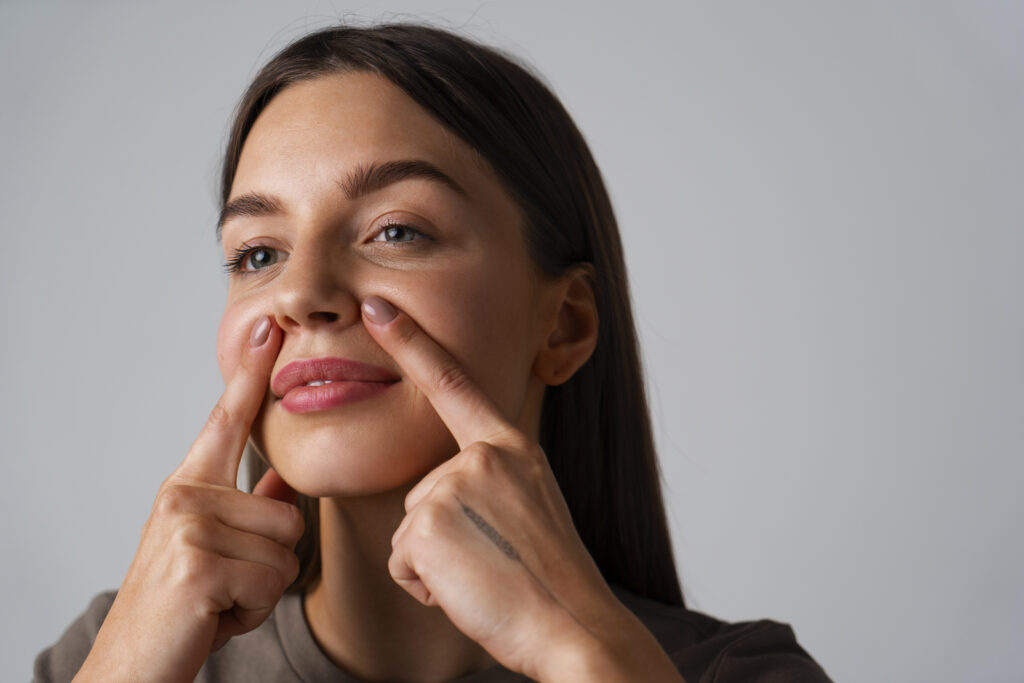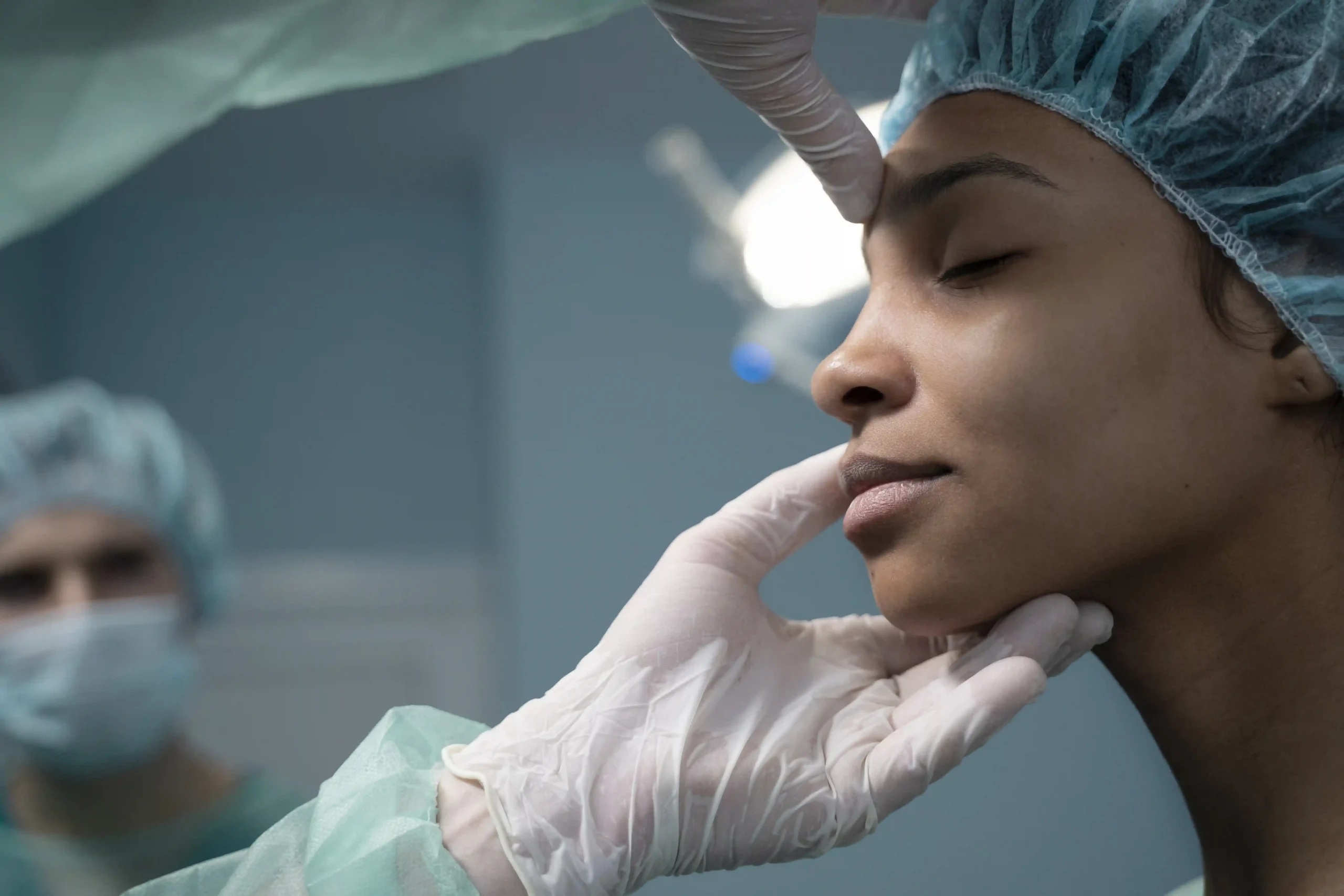Non-surgical nose job Turkey is a simple procedure with a lot behind it.
You use dermal fillers to tweak the bridge or tip, smooth small bumps, and sharpen lines without an operation. It’s quick, it’s reversible, and it’s popular with travelers who want subtle changes and minimal downtime.
In this guide, one of the best nose Turkey surgeon, Dr. Cem Altindag, will lay out what the treatment can and cannot do, who it suits, what it costs in Turkey vs the UK/US, and how to pick a safe clinic in Istanbul or beyond. We will also compare non-surgical vs surgical rhinoplasty Turkey so you can decide if this is the right path for you!
Contents
- 1 What a Non-Surgical Nose Job Is
- 2 Who Non Surgical Nose Jobs in Turkey Is For and Who Should Skip It
- 3 Non-Surgical Nose Job Filler Types and Reversibility
- 4 Non-Surgical Nose Job Procedure, Pain, and Downtime
- 5 Non-Surgical Nose Job Results and Longevity
- 6 Non-Surgical Rhinoplasty Risks and How Clinics Mitigate Them
- 7 Cost in Turkey vs UK/US
- 8 Choosing a Clinic in Turkey
- 9 Travel Planning for Medical Tourists
- 10 Non-Surgical vs Surgical Rhinoplasty: Which Is Worth It for You?
- 11 Rhinoplasty Before and After and Realistic Expectations
- 12 Non-Surgical Nose Job Turkey Aftercare: First 48 Hours and Beyond
- 13 Non-Surgical Rhinoplasty Turkey Cost Examples and What’s Included
- 14 How Rhinoplasty Clinics in Turkey Mitigate Risk
- 15 Is a Non-Surgical Nose Job Worth It?
- 16 Frequently Asked Questions About Non-Surgical Nose Job in Turkey
- 17 How to Use This Non-Surgical Rhinoplasty Turkey Guide
What a Non-Surgical Nose Job Is
A non-surgical rhinoplasty Turkey treatment reshapes the nose with small injections of hyaluronic acid (HA) filler to camouflage a hump, add definition to the bridge, raise the radix, or give a gentle tip lift. It cannot make a large nose smaller or fix breathing problems. Fillers add volume; they don’t remove it. That’s why reductions, big deviations, or functional issues still need surgery.
Most doctors favor HA fillers for nose work because they’re moldable and reversible with hyaluronidase if the shape is off or a safety issue arises. Session time is usually 20–30 minutes, including numbing and mapping. Results show up right away.
Who Non Surgical Nose Jobs in Turkey Is For and Who Should Skip It
Good candidates want small, camera-friendly changes: a straighter bridge, a softer bump, or a touch more tip projection. If you’re hoping for a smaller nose, major hump removal, narrower bones, or better airflow, surgery is the better tool.
Is a non-surgical nose job worth it for small refinements?
Often yes.
For structural change or breathing, no.
You should avoid fillers if you’re pregnant or breastfeeding, have an active skin infection, a known allergy to product components, or certain bleeding/autoimmune issues. Patients with body dysmorphic disorder also tend to be poor candidates and should be screened carefully.
Non-Surgical Nose Job Filler Types and Reversibility
Most hyaluronic acid nose filler Turkey treatments use HA gels because they can be dissolved with hyaluronidase if needed. That “undo” option is a major safety net for patients and clinics. Calcium hydroxyapatite (CaHA) can last longer in other areas, but HA remains the standard for noses due to reversibility and control.
Non-Surgical Nose Job Procedure, Pain, and Downtime
Expect a short consult, facial mapping, topical numbing, and careful injections in the midline of the nose, with small amounts placed precisely. Many clinicians use a fine needle; some prefer a blunt cannula. Both methods can be safe when used by experienced injectors who understand nasal anatomy. Most people report mild pressure rather than pain. Bruising is usually light and settles within days. Avoid intense workouts for 48–72 hours and resist touching or squeezing the area while the filler integrates.
Travelers: it’s smart to remain near your injector for at least 1–2 days after treatment in case you need a quick check. Many practitioners also suggest waiting 24–48 hours before flying to let swelling settle. You’ll see advice that ranges from 24 hours up to a week; the priority is access to your clinician in the first days if you need help.
If you want to learn more about what to expect after rhinoplasty, you can check our recovery after rhinoplasty blog.
Non-Surgical Nose Job Results and Longevity

How long nose filler Turkey results last depends on product choice, dose, placement, metabolism, and aftercare. Most patients see 6–12 months of improvement with HA; some hold results closer to 9–18 months. Touch-ups are common once or twice a year.
If you’re wondering how long does nose filler last, plan for a check-in at 2 weeks and a touch-up in the 6–12 month window based on your goals and how your body metabolizes HA.
Non-Surgical Rhinoplasty Risks and How Clinics Mitigate Them
Common effects include redness, swelling, and bruising that fade within days. Rare but serious events can happen if filler blocks a blood vessel, which can cause skin injury or even vision loss. The nose, forehead, and glabella are higher-risk zones for filler-related blindness, which is why training and emergency readiness matter.
Safer practice involves tiny amounts per injection site, midline placement, slow injection with frequent checks, and keeping an emergency kit that includes hyaluronidase. Some clinicians choose cannula for parts of the nose to reduce trauma, though both cannula and needle require anatomical precision. This is the heart of non-surgical nose job risks discussions and the reason to choose a highly trained doctor.
To learn more about how you can find the best rhinoplasty surgeons in Turkey, check our choosing the best rhinoplasty surgeon in Turkey post.
Cost in Turkey vs UK/US
Prices vary by city, clinic, injector experience, and the brand/amount of filler. Here’s a realistic look at nose filler cost Turkey compared with the UK and US. Ranges are for one session unless noted.
| Location | Typical price for non-surgical rhinoplasty Turkey and peers | |
| Turkey | $200–$600 widely quoted in Istanbul clinics; aggregator packages $586–$1,500+ depending on facility and inclusions | |
| United Kingdom | £300–£1,000 in London clinics | |
| United States | $600–$1,500+ at many facial plastics practices |
For context, surgical rhinoplasty is far more expensive and involves downtime. Typical private prices: Turkey roughly €2,750–€4,000; UK often £6,000–£15,000; US commonly $7,600+ for surgeon fee alone, with full totals higher.
Packages in Turkey sometimes include hotel and transfers; UK/US quotes usually don’t. Always get a written breakdown of what’s included.
Choosing a Clinic in Turkey
If you’re booking a non-surgical nose job Istanbul, vet the injector as carefully as you would a surgeon.
- Credentials: Look for membership in the Turkish Society of Plastic, Reconstructive and Aesthetic Surgeons (TPRECD/TSPRAS). Many surgeons also hold EBOPRAS or ISAPS credentials, which you can verify in public directories.
- Product transparency: Ask which HA brand they use. You want reputable, CE-marked or FDA-approved fillers and an on-site stock of hyaluronidase.
- Safety protocol: Clinics should describe how they reduce risk, show their emergency kit, and explain how they handle suspected vascular events.
- Reviews and photos: Request unedited before/after images from similar cases.
- Aftercare and access: Confirm you can get seen within 24–48 hours if you’re still in Turkey, and that you’ll have a named contact once you fly home. UK organizations remind travelers that aftercare can be harder when you go abroad, so plan for this.
Travel Planning for Medical Tourists

If you’re flying in for rhinoplasty Turkey, plan a short, sensible itinerary.
- Trip length: Arrive the day before. Have treatment early in your stay. Keep at least 1–2 days buffer before flying back so your clinician can review your result and manage swelling or small tweaks. Many practitioners suggest waiting 24–48 hours before flights; some advise a bit longer. Your safety net is easy access to your injector for the first couple of days.
- Insurance and paperwork: Read consent forms, ask about product brand and batch, and keep a copy of your treatment notes.
- Follow-up: Book a remote check at 2 weeks and budget for a touch-up in 6–12 months if you like the look.
Non-Surgical vs Surgical Rhinoplasty: Which Is Worth It for You?
Non-surgical vs surgical rhinoplasty Turkey comes down to goals, budget, and patience.
- Precision and permanence: Surgery reshapes bone and cartilage and can fix function. It’s permanent but needs weeks of recovery. Fillers are great for optical tricks and symmetry but cannot reduce size or improve breathing.
- Downtime: Fillers have minimal downtime. Surgery typically means splints, bruising, and a couple of weeks of social downtime.
- Cost over time: A single surgery is costly up front. Fillers cost less per visit but add up if you maintain results for many years. See the cost table above for ballpark numbers.
- Revisions: HA nose filler is reversible, so you can fine-tune or dissolve. Surgery revisions are possible but more complex.
If you need a noticeable reduction, a straighter septum, or valve repair, surgery wins. If you want subtle contouring with fast recovery, rhinoplasty Turkey is often the sweet spot.
Rhinoplasty Before and After and Realistic Expectations
When people search rhinoplasty before and after Turkey, they often see smooth bridges, a crisper profile, and a lighter tip droop in photos. That’s achievable for many, but avoid “overfilling” the tip or the supratip area, which can make the nose look heavier from the front.
Ask for conservative dosing and plan for a small top-up rather than trying to do everything at once. A skilled injector will explain what’s realistic for your anatomy and will keep placement in the safer planes to reduce risk.
Non-Surgical Nose Job Turkey Aftercare: First 48 Hours and Beyond
Right after non-operational nose job in Turkey, keep things gentle.
- First 24–48 hours: Avoid heavy exercise, saunas, hot yoga, and direct heat. Don’t wear heavy glasses that press on the bridge. Sleep with your head slightly raised and avoid pressing on the nose.
- What to watch for: Growing pain, blanching or dusky skin, or sudden visual changes need urgent contact with the clinic or emergency care. Clinics should have a plan for this.
- Follow-up: A review at 1–2 weeks is common. Small adjustments happen then if needed.
Non-Surgical Rhinoplasty Turkey Cost Examples and What’s Included
To make budgeting clearer, here’s how non-operational nose job Turkey typically breaks down:
- Istanbul clinic fee: Treatment session using HA filler, consultation, and a short follow-up. Common range $200–$600. Premium packages or hospital-based care can be $1,000–$1,500+.
- UK clinics: Often £300–£1,000, depending on brand and expertise.
- US practices: Often $600–$1,500+, sometimes more in major metros.
Surgical rhinoplasty costs are much higher everywhere, and recovery is longer, which affects time off work and travel plans.
How Rhinoplasty Clinics in Turkey Mitigate Risk
Leading rhinoplasty clinics in Turkey manage the known risks of nasal filler by:
- Keeping injections in safer midline planes with tiny volumes per pass.
- Using aspiration, slow injection, and careful molding rather than force.
- Choosing HA for reversibility and stocking hyaluronidase in the room.
- Training in recognition and management of vascular events and having referral links to ophthalmology and emergency services.
These steps, plus board-level training and membership in Turkish and international societies (TPRECD/TSPRAS, EBOPRAS, ISAPS), are good signs that safety is front and center.
Is a Non-Surgical Nose Job Worth It?
For small contour fixes with fast recovery, is a non-surgical nose job worth it?
If your goals are modest and you’re comfortable with maintenance and a small risk profile, yes. If you want a smaller nose, better airflow, or a once-and-done change, surgery is the better long-term value. The decision isn’t only about price; it’s about matching the tool to the job and choosing a clinician who treats safety like a checklist, not an afterthought.
Frequently Asked Questions About Non-Surgical Nose Job in Turkey
What can a non-surgical rhinoplasty Turkey treatment fix?
Small humps, shallow depressions, and mild asymmetry on the bridge; minor tip lift or definition. Not size reduction or breathing problems.
How long do results last?
Plan on 6–12 months, sometimes up to 9–18 months with HA and good technique. Touch-ups are common.
How risky is it?
Common effects are swelling and bruising. Rare vascular events can threaten skin or vision. Choose an expert who understands anatomy and has an emergency plan.
How much is liquid rhinoplasty Turkey?
Roughly $200–$600 at many Istanbul clinics; aggregator packages $586–$1,500+ depending on inclusions.
When can I fly home?
Many clinicians advise staying 1–2 days for review and waiting 24–48 hours before flying; some advise longer. The key is being reachable if you need care.
How to Use This Non-Surgical Rhinoplasty Turkey Guide
- If you want subtle changes and minimal downtime, non-surgical nose job Istanbul clinics can offer strong value, but vet your injector and plan smart travel buffers.
- If your goals are larger or functional, compare total long-term costs and benefits of surgery in Turkey vs at home.
When you reach out to clinics, ask:
- Who injects me, and what are their qualifications and TPRECD/EBOPRAS/ISAPS memberships?
- Which HA brand will you use, and do you keep hyaluronidase on site?
- What’s your protocol for suspected vascular issues and vision changes?
- Can I see unedited before/afters from similar cases?
- What follow-up do you offer for travelers once they’re back home?
If those answers are clear, you’ll feel more confident about booking and more likely to love your result.


